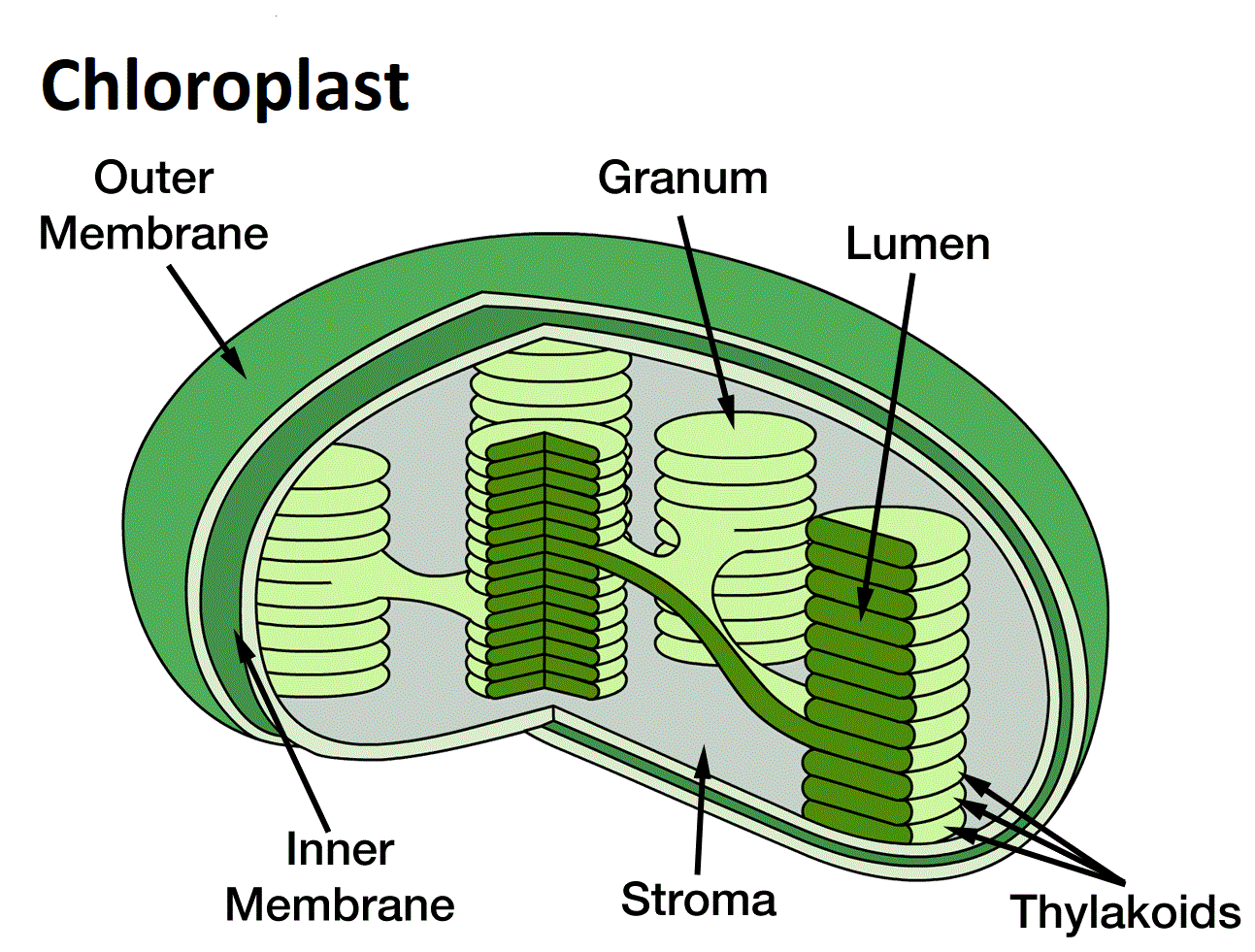
Draw a well labelled diagram of a sectional view of chloroplast and label the sites for light reactions and dark reactions.
Answer
401.4k+ views
Hint: Organelles present in plant cells and eukaryotic algae are chloroplasts. They are known as the plant's 'chef,' as they use sunlight, carbon dioxide, and water to provide food and energy to the plant. Chloroplast is derived from the Greek words khloros, which means "green," and plates, which means "made." They're classified as organelles, which are little structures in plants that conduct certain jobs.
Complete answer:
The outer and inner membrane systems are seen in a sectional image of the chloroplast. Outer membrane space, intermembrane space, and inner membrane space are all included. A third membrane structure termed thylakoids reside within the lumen of the chloroplast (site of light-dependent reactions).
Structure of chloroplast-
Membrane envelope- Inner and exterior lipid bilayer membranes make up this structure. The stroma is separated from the intermembrane gap by the inner membrane.
Intermembrane space- Between the inner and outer membranes is a region called the intermembrane space.
Thylakoid system- In the stroma, the system is stalled. The thylakoids are a group of membrane sacs. The chlorophyll pigments contained in thylakoid membranes are green in colour. It is the visual representation of the photosynthesis process's light-dependent processes.
Stroma- It's a protein-rich, translucent, alkaline, aqueous fluid that surrounds the grana and is present within the chloroplast's inner membrane.
Grana- These are the locations where light energy is converted into chemical energy.
Chlorophyll- It's a green photosynthetic pigment that aids in the photosynthesis process.

Note:
Functions of chloroplast-
The major function of the chloroplast is to produce food through the photosynthesis process.
Received light energy is transformed to chemical energy.
In all green plants, chloroplast contains a component called chlorophyll, which traps solar energy and is used for food synthesis.
Photolysis of water yields NADPH and molecular oxygen (${O_2}$).
Complete answer:
The outer and inner membrane systems are seen in a sectional image of the chloroplast. Outer membrane space, intermembrane space, and inner membrane space are all included. A third membrane structure termed thylakoids reside within the lumen of the chloroplast (site of light-dependent reactions).
Structure of chloroplast-
Membrane envelope- Inner and exterior lipid bilayer membranes make up this structure. The stroma is separated from the intermembrane gap by the inner membrane.
Intermembrane space- Between the inner and outer membranes is a region called the intermembrane space.
Thylakoid system- In the stroma, the system is stalled. The thylakoids are a group of membrane sacs. The chlorophyll pigments contained in thylakoid membranes are green in colour. It is the visual representation of the photosynthesis process's light-dependent processes.
Stroma- It's a protein-rich, translucent, alkaline, aqueous fluid that surrounds the grana and is present within the chloroplast's inner membrane.
Grana- These are the locations where light energy is converted into chemical energy.
Chlorophyll- It's a green photosynthetic pigment that aids in the photosynthesis process.

Note:
Functions of chloroplast-
The major function of the chloroplast is to produce food through the photosynthesis process.
Received light energy is transformed to chemical energy.
In all green plants, chloroplast contains a component called chlorophyll, which traps solar energy and is used for food synthesis.
Photolysis of water yields NADPH and molecular oxygen (${O_2}$).
Recently Updated Pages
Master Class 10 Computer Science: Engaging Questions & Answers for Success

Master Class 10 Maths: Engaging Questions & Answers for Success

Master Class 10 English: Engaging Questions & Answers for Success

Master Class 10 General Knowledge: Engaging Questions & Answers for Success

Master Class 10 Science: Engaging Questions & Answers for Success

Master Class 10 Social Science: Engaging Questions & Answers for Success

Trending doubts
State and prove Bernoullis theorem class 11 physics CBSE

Raindrops are spherical because of A Gravitational class 11 physics CBSE

What are Quantum numbers Explain the quantum number class 11 chemistry CBSE

Write the differences between monocot plants and dicot class 11 biology CBSE

Why is steel more elastic than rubber class 11 physics CBSE

Explain why a There is no atmosphere on the moon b class 11 physics CBSE




